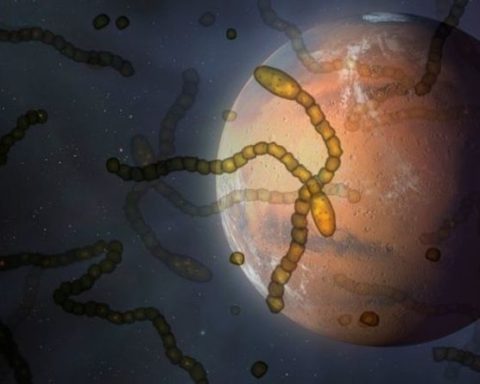The search for life beyond Earth has always fascinated scientists, and Mars remains one of the most promising candidates in our solar system. But before we set foot on the Red Planet, researchers on Earth are already conducting experiments to understand how life might survive there. The focus of this research lies in microbes—tiny, resilient organisms that can endure some of the harshest environments imaginable. Studying these extremophiles on Earth helps scientists prepare for potential microbial life on Mars and understand how humans could one day thrive in its challenging conditions.
Mars presents a landscape that is both intriguing and hostile. It has thin air, freezing temperatures, and high levels of radiation. Yet, certain places on Earth mirror these conditions surprisingly well. By studying microbes in such extreme environments, scientists can learn how life might adapt to Martian conditions and what biological signatures to look for in future missions.
Earth’s Extreme Environments That Mimic Mars
To understand Mars, scientists look to places on Earth that replicate its harsh features:
- The Atacama Desert (Chile): One of the driest places on Earth, similar to the dryness of Mars’ surface. Some microbes here survive without water for years, relying on tiny amounts of moisture from the air.
- Antarctica’s Dry Valleys: With sub-zero temperatures and low humidity, these regions are almost as cold and arid as Mars. Microbes living beneath ice sheets provide clues about survival in frozen environments.
- Yellowstone’s Hot Springs (USA): Though hotter than Mars, these hydrothermal systems teach us how microbes adapt to extreme chemical conditions, which may resemble ancient Martian environments.
- Salt flats and alkaline lakes: High salt concentrations mimic the mineral-rich soils and brines that may exist beneath Mars’ surface.
By examining microbes in these areas, researchers can identify the biological mechanisms that enable survival in hostile conditions—such as DNA repair systems, protective biofilms, and unique metabolic processes that allow them to use minerals instead of sunlight or oxygen for energy.
Why Microbes Matter for Mars Exploration
Microbes play a crucial role in astrobiology—the study of life in the universe. If microbial life exists or once existed on Mars, it could reshape our understanding of biology and evolution. Moreover, microbes could become key allies for human missions to Mars.
They might help with:
- Oxygen production: Some microbes, like cyanobacteria, can produce oxygen through photosynthesis.
- Waste recycling: Microbes could break down waste, turning it into useful resources.
- Soil enrichment: Bacteria could help make Martian soil fertile enough to grow crops.
- Biomining: Certain microbes can extract metals from rocks, potentially useful for resource extraction on Mars.
NASA, ESA, and other space agencies are investing heavily in microbial research through missions such as the Perseverance rover, which is collecting samples that may one day be analyzed for signs of microbial fossils. Additionally, laboratory simulations of Martian environments—known as Mars chambers—allow scientists to test how microbes react to radiation, low pressure, and cold, helping them predict survival chances beyond Earth.
Challenges in Microbial Research
One major challenge is ensuring that we don’t contaminate Mars with Earth’s microbes. Spacecraft undergo strict sterilization to prevent false detections of life. At the same time, scientists must be cautious not to bring any potential Martian microbes back to Earth without proper containment. Balancing exploration with biosecurity is essential to maintain scientific integrity and planetary safety.
Another challenge lies in the unknown adaptability of life itself. While some microbes can survive radiation and desiccation, Mars’s conditions push these limits further. Scientists are still exploring whether life, even microbial, could thrive without a strong magnetic field or stable water sources.
The Future of Microbial Research and Mars Missions
As technology advances, scientists are developing more sophisticated tools to study microbial life in situ. Instruments capable of detecting biomolecules, isotopic ratios, and genetic material will soon be part of upcoming missions. Researchers are also experimenting with synthetic biology, engineering microbes that could help astronauts produce fuel, food, and oxygen from Martian resources.
Private and government agencies alike are looking toward Mars colonization, and understanding microbes is at the heart of that dream. They could form the foundation of sustainable life-support systems, making human habitation possible in the long run.
Conclusion
Studying microbes in Earth’s extreme environments is more than an academic exercise—it’s a rehearsal for humanity’s future beyond Earth. These resilient organisms hold secrets to survival under radiation, cold, and scarcity, conditions very similar to those on Mars. Every discovery brings us closer to answering the timeless question: Are we alone in the universe? As we continue to learn from Earth’s tiniest survivors, we not only prepare for life on Mars but also gain a deeper appreciation of the remarkable adaptability of life itself.














